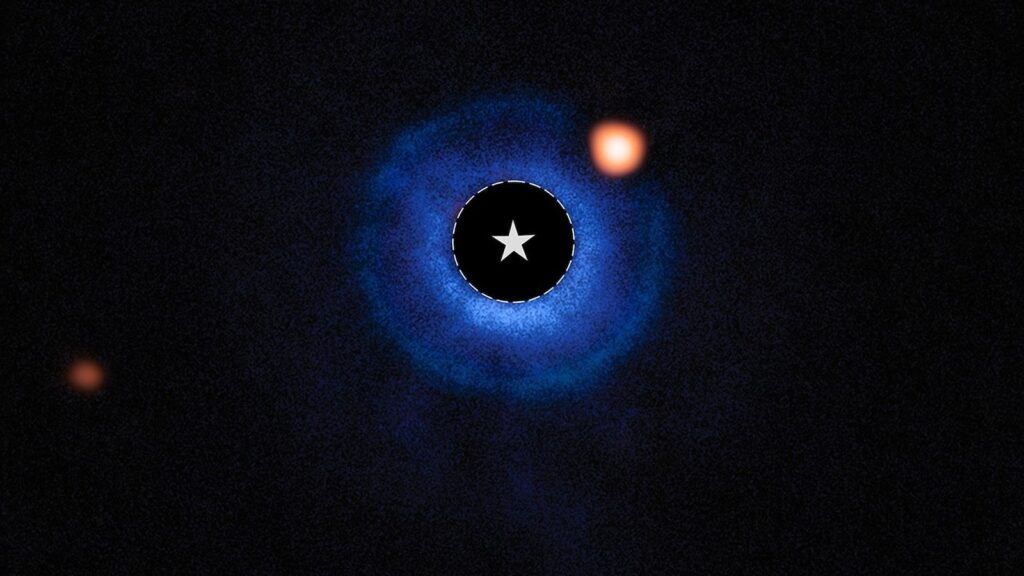
Astronomers using NASA’s James Webb Space Telescope have made a groundbreaking discovery, identifying a planet with a mass similar to Saturn orbiting the young star TWA 7. This celestial body, located 34 light-years away, exhibits temperatures that suggest the potential for habitable conditions.
The discovery was made possible by combining data from the European Southern Observatory’s Very Large Telescope (VLT) and the Webb’s Mid-Infrared Instrument (MIRI). By subtracting the light from TWA 7, scientists were able to reveal the planet, named TWA 7b, in the surrounding debris disk.
A New Era in Planetary Discovery
The James Webb Space Telescope, the most powerful telescope ever launched, continues to push the boundaries of space exploration. This latest discovery marks the first time Webb has captured a direct image leading to the identification of a new planet, rather than relying on gravitational lensing techniques.
Initial analyses suggest that TWA 7b could be a young, cold planet with temperatures around 120 degrees Fahrenheit. According to NASA, this temperature range falls within the limits that could support life, which typically grows between 5 and 251 degrees Fahrenheit.
Advanced Imaging Techniques
An international team of astronomers utilized high-contrast imaging to suppress the bright glare of the host star, allowing them to detect the faint infrared source of TWA 7b. This technique is crucial for observing planets that would otherwise be obscured by the overwhelming light of their stars.
“Our observations reveal a strong candidate for a planet shaping the structure of the TWA 7 debris disk, and its position is exactly where we expected to find a planet of this mass,” said Anne-Marie Lagrange, a researcher at the Observatoire de Paris-PSL and Université Grenoble Alpes in France.
Implications for Future Research
The discovery of TWA 7b is a significant step forward in understanding planetary systems, particularly those around young stars. The debris disk surrounding TWA 7 is one of the youngest known, providing valuable insights into the early stages of planetary formation.
Co-author Mathilde Malin, an assistant research associate at Johns Hopkins University and the Space Telescope Science Institute, emphasized the importance of this finding. “This discovery highlights the Webb telescope’s ability to explore previously unseen low-mass planets around nearby stars,” she stated.
Historical Context and Future Exploration
This discovery follows a long history of astronomical breakthroughs facilitated by advancements in telescope technology. From Galileo’s first telescopic observations to the Hubble Space Telescope’s deep space images, each leap in technology has expanded our understanding of the universe.
The James Webb Space Telescope, with its unprecedented capabilities, is poised to continue this tradition. By revealing planets like TWA 7b, Webb not only enhances our understanding of planetary systems but also opens new avenues for exploring the potential for life beyond Earth.
According to NASA, “The detection would match the expected position of a planet and explain key features of planets seen in the debris disk.”
Looking Ahead
The discovery of TWA 7b is just the beginning. As the James Webb Space Telescope continues its mission, astronomers anticipate uncovering more planets that could potentially support life. These findings will undoubtedly contribute to the ongoing search for extraterrestrial life and deepen our understanding of the cosmos.
As researchers continue to analyze the data from TWA 7b, the scientific community eagerly awaits further insights that could reshape our understanding of planetary habitability and the conditions necessary for life.







